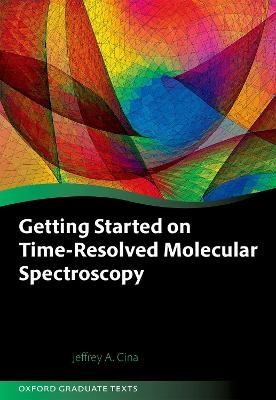
Getting Started on Time-Resolved Molecular Spectroscopy
Seiten
2022
Oxford University Press (Verlag)
978-0-19-959031-5 (ISBN)
Oxford University Press (Verlag)
978-0-19-959031-5 (ISBN)
Aimed at graduate students in physics and physical chemistry, this textbook provides an accessible and comprehensive introduction to ultrafast spectroscopy. Each chapter is designed to be self-contained and includes in-text exercises to illustrate or expand upon the ideas covered in the main text.
This textbook provides an overview of the basics of ultrafast molecular spectroscopy starting from time-dependent quantum mechanical perturbation theory in Hilbert space. It emphasizes the dynamics of nuclear and electronic motion, initiated and monitored by femtosecond laser pulses, which underlie the generation of nonlinear optical signals and inform their interpretation.
Topics include short-pulse electronic absorption, the molecular adiabatic approximation, transient-absorption spectroscopy, vibrational adiabaticity during conformational change, femtosecond stimulated Raman spectroscopy, multi-dimensional electronic spectroscopy and wave-packet interferometry, and two-dimensional wave-packet interferometry of electronic excitation-transfer systems.
The treatment is based on time-dependent quantum mechanics as it is presented in graduate-level quantum mechanics courses. It is designed to be accessible to beginning practitioners of ultrafast spectroscopy and is meant to serve as a bridge to more advanced treatises and research publications. Numerous exercises are embedded in the text to explore and expand upon the physical ideas encountered in this important research field.
This textbook provides an overview of the basics of ultrafast molecular spectroscopy starting from time-dependent quantum mechanical perturbation theory in Hilbert space. It emphasizes the dynamics of nuclear and electronic motion, initiated and monitored by femtosecond laser pulses, which underlie the generation of nonlinear optical signals and inform their interpretation.
Topics include short-pulse electronic absorption, the molecular adiabatic approximation, transient-absorption spectroscopy, vibrational adiabaticity during conformational change, femtosecond stimulated Raman spectroscopy, multi-dimensional electronic spectroscopy and wave-packet interferometry, and two-dimensional wave-packet interferometry of electronic excitation-transfer systems.
The treatment is based on time-dependent quantum mechanics as it is presented in graduate-level quantum mechanics courses. It is designed to be accessible to beginning practitioners of ultrafast spectroscopy and is meant to serve as a bridge to more advanced treatises and research publications. Numerous exercises are embedded in the text to explore and expand upon the physical ideas encountered in this important research field.
Jeff Cina earned a BS in Mathematics at UW-Madison, a PhD in Theoretical Physical Chemistry at UC-Berkeley, and carried out post-doctoral research at MIT. After teaching and conducting research at The University of Chicago, he joined the faculty at the University of Oregon in 1995. At Oregon, Cina was a founding member of the Oregon Center for Optics, now the Oregon Center for Optical, Molecular, and Quantum Science.
| Erscheinungsdatum | 19.05.2022 |
|---|---|
| Verlagsort | Oxford |
| Sprache | englisch |
| Maße | 175 x 252 mm |
| Gewicht | 474 g |
| Themenwelt | Naturwissenschaften ► Chemie ► Analytische Chemie |
| Naturwissenschaften ► Physik / Astronomie ► Elektrodynamik | |
| Naturwissenschaften ► Physik / Astronomie ► Quantenphysik | |
| ISBN-10 | 0-19-959031-1 / 0199590311 |
| ISBN-13 | 978-0-19-959031-5 / 9780199590315 |
| Zustand | Neuware |
| Haben Sie eine Frage zum Produkt? |
Mehr entdecken
aus dem Bereich
aus dem Bereich
Buch | Hardcover (2012)
Westermann Schulbuchverlag
CHF 44,90
Schulbuch Klassen 7/8 (G9)
Buch | Hardcover (2015)
Klett (Verlag)
CHF 29,90
Buch | Softcover (2004)
Cornelsen Verlag
CHF 23,90


